For the honor of Greyskull! With two seasons and 20 episodes under its belt, the DreamWorks/Netflix animated series She-Ra and the Princesses of Power has put its characters through some serious growth, not to mention lots of battles, plenty of relationship drama and even a tabletop game — sort of. Ahead of the season two premiere on April 26, The Beat caught up with the series’ showrunner: Eisner-, Harvey- and GLAAD Media Award-winning writer Noelle Stevenson.
Read on to see what Stevenson had to say about the characters of She-Ra, how season two builds on the foundations laid by season one, and how the show continues to change the status quo.
Samantha Puc: Season two sees a lot of growth for the She-Ra characters, especially in their relationships with each other. I’m curious about what the dynamic was like in the writers’ room and also with the cast as you worked on season two.
Noelle Stevenson: Season two is building so much. Season one was so much about set-up, so it was about the characters coming into their roles: Adora coming into her role as She-Ra, Catra coming into her role as a villain, the Princess Alliance coming together… Now that we have all of that set — the board is set — in the new season, we build off that. We evolve those relationships, evolve the characters. It was really exciting for us, because it really freed us up to be able to explore all of these other characters and their interiority and their motivations and the way they saw the world. We could just keep changing the status quo and figuring out new, interesting and fun pairings of characters.
So much of that did come from the actors, as well. I think Scorpia is a great example. Lauren [Ash] ad-libs a lot when she records and it’s something where we just let her go and we record everything. All of it always makes it in and then we end up writing it into the script. So, you know, she developed this inside joke or callback that we have to write into the script where every time Scorpia is trying to get Catra’s attention, she says, “Catra! Catra! Catra! Hey Catra!” So that’s what really made the characters feel alive and fleshed-out to us, was being able to explore them with the writers and with the actors.
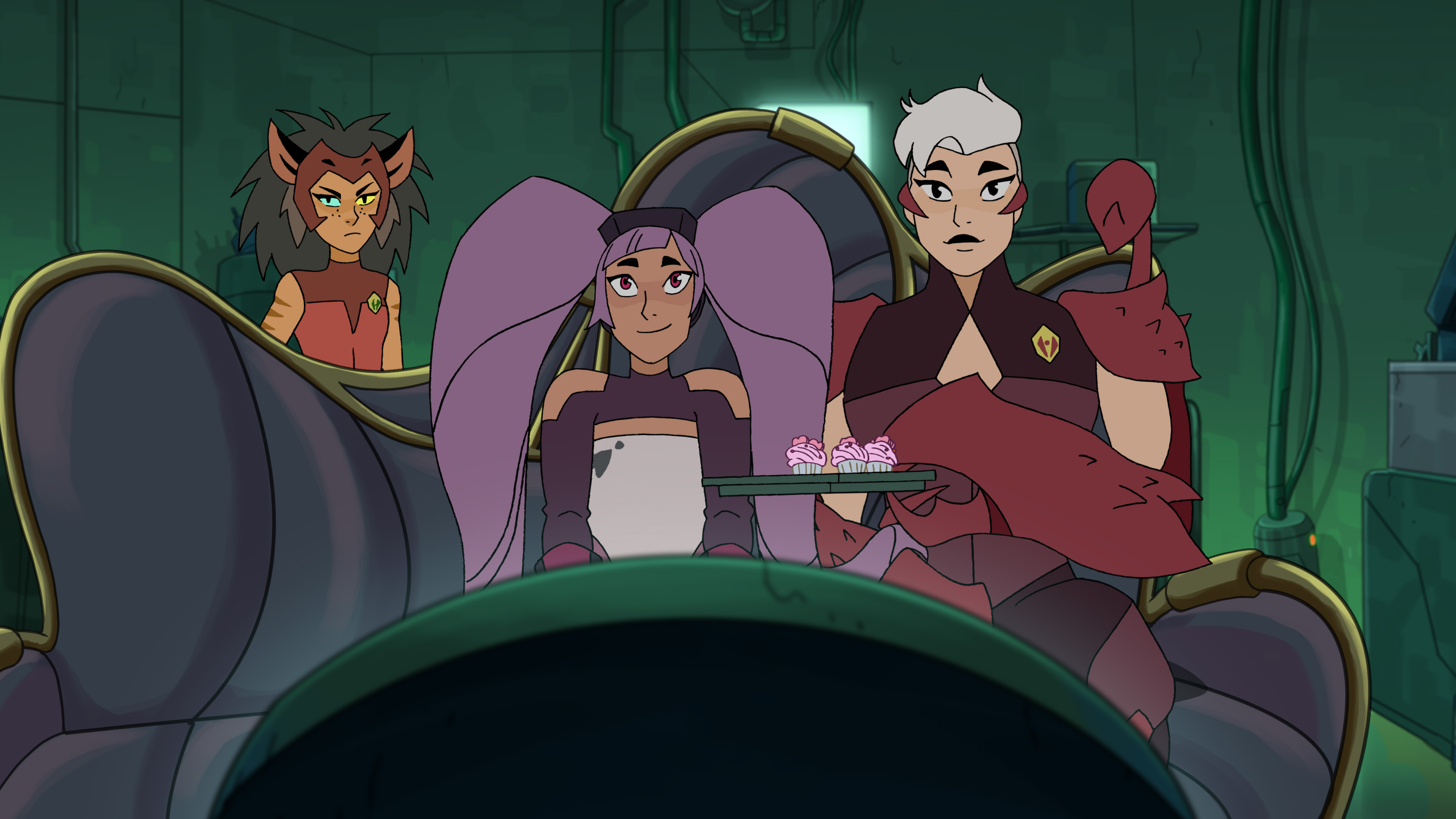
Puc: Speaking of Scorpia, one of my favorite arcs in this season is how desperately she wants to be Catra’s one-and-only, #1 best friend. As a queer viewer, there’s a lot of subtext to that relationship that I appreciate, like Scorpia having to reconcile her jealousy of Adora and those types of things. Can you speak a little bit to how the relationship between Scorpia and Catra has developed, almost as a foil to their other relationships?
Stevenson: I think Scorpia is someone who is so loyal. She’s on the side of the Horde, but she’s the sweetest, most sincere, most open-hearted character that we have. She sees Catra as someone that she needs to protect — as someone that she can fix, honestly. She’s sees someone who’s very sad and very broken and in her own mind, she thinks, “This person — we are destined to be together. I can save her.” Catra’s not really in a place right now where she can accept that, even though she is someone who is looking for love, looking for validation, looking for acceptance — although she would never admit that.
At this point, Catra’s heart’s been so broken that she’s sort of shut herself off from all of that. She’s not letting herself accept this kind of positive attention at all. For her, she’s still very skeptical of that, I think. It’s interesting because she really does have this chance to grow past Adora in a way that is healthy, but she’s not really taking that chance. She’s pretending she is. She’s pretending that she can be her own person, be this badass villain who is always in control, but that’s a facade. She’s struggling so much with her own interiority and her own feelings of not being enough and she’s looking for that validation from places like Adora and Shadow Weaver — places that aren’t really healthy for her.
So, I think the tension between Catra and Scorpia is that Scorpia thinks this is a problem that can be easily solved with hugs, with care-taking, with positive attention. Catra is just — while she does need to open herself to other people and have healthy relationships, she’s not ready to do that. She’s doubling down on the, “I don’t need anybody. I can make my own way” type of outlook.
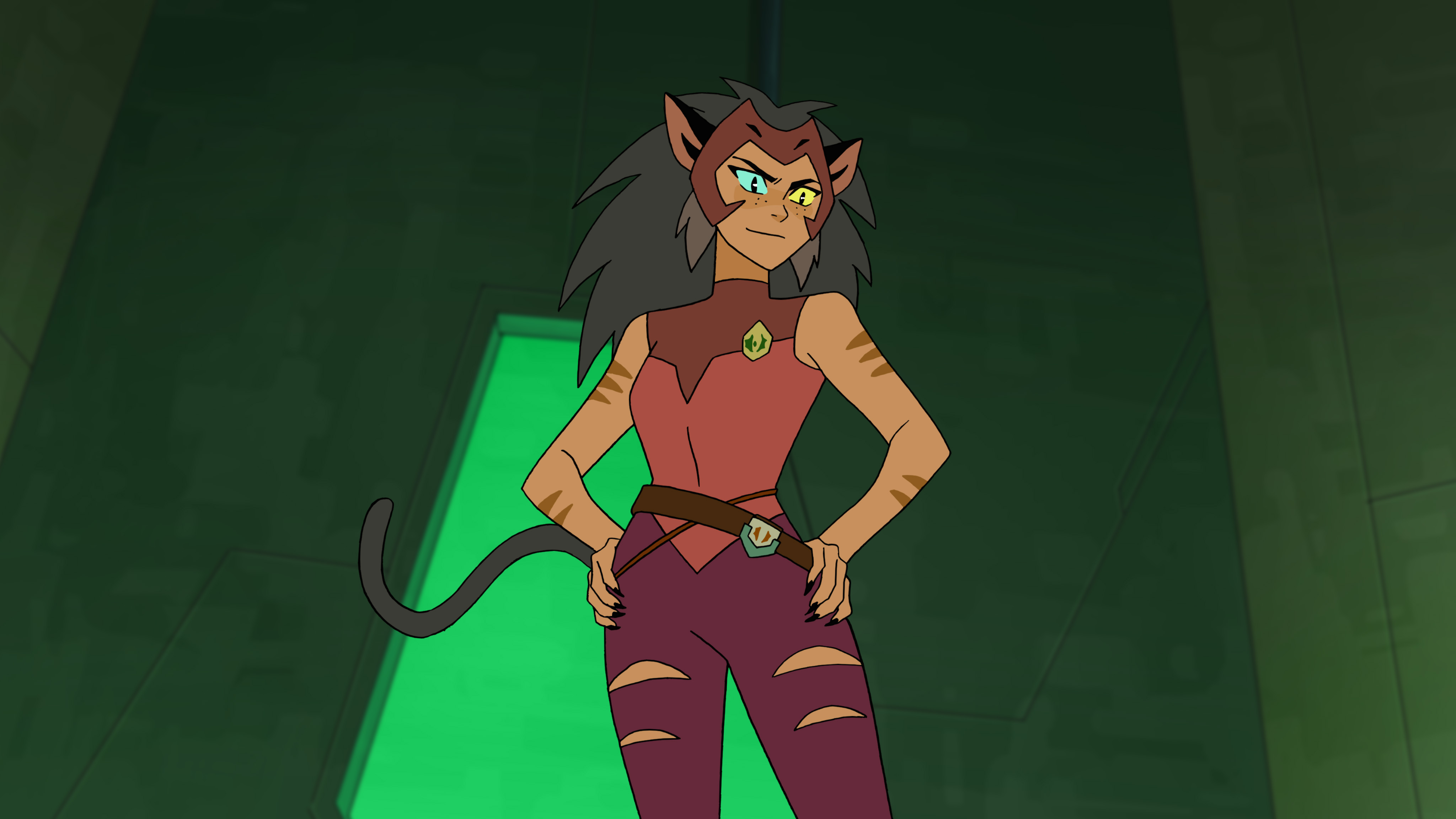
Puc: You mentioned Shadow Weaver, who obviously plays such a huge role in season one and also plays a very large role in season two, but in a very different capacity. One of the things that happens in season two is that you really dive into the backgrounds of characters that we didn’t really know a lot about before; those characters are Shadow Weaver and Bow. Those two episodes are so different, but they also reveal so much about each of those characters, so can you talk about how the story-telling process came about for each of them and how you decided to structure those episodes?
Stevenson: Shadow Weaver is honestly one of my favorite characters to write, because I find her very, very compelling but also unpredictable. Honestly, my plan was for her to remain with the Horde a little bit longer and that isn’t really how it shook out. It definitely felt like she had reached the end of her arc as Hordak’s second-in-command and so then the question was, how does her arc evolve from there? Even once she’s reduced from her place of authority and imprisoned, she still continues to be such a huge figure in both Catra’s and Adora’s minds. She’s still controlling things even with absolutely no power.
Digging into her backstory like that, we definitely wanted to avoid doing the sort of tragic backstory that would try and excuse her actions. We wanted to show that everything — her selfishness and her hunger for power — these had always been things that she had in her, but at a certain time, that presented itself differently. So, [we tried] getting more into how she sees the world but definitely not trying to sand down any of what she’s done. Showing that backstory was really fun for us, because it was like, “Oh, she used to be this different person on the side of good, but also, you can see all the ways that she’s always been the same person.” But you do get to see this different side of her.
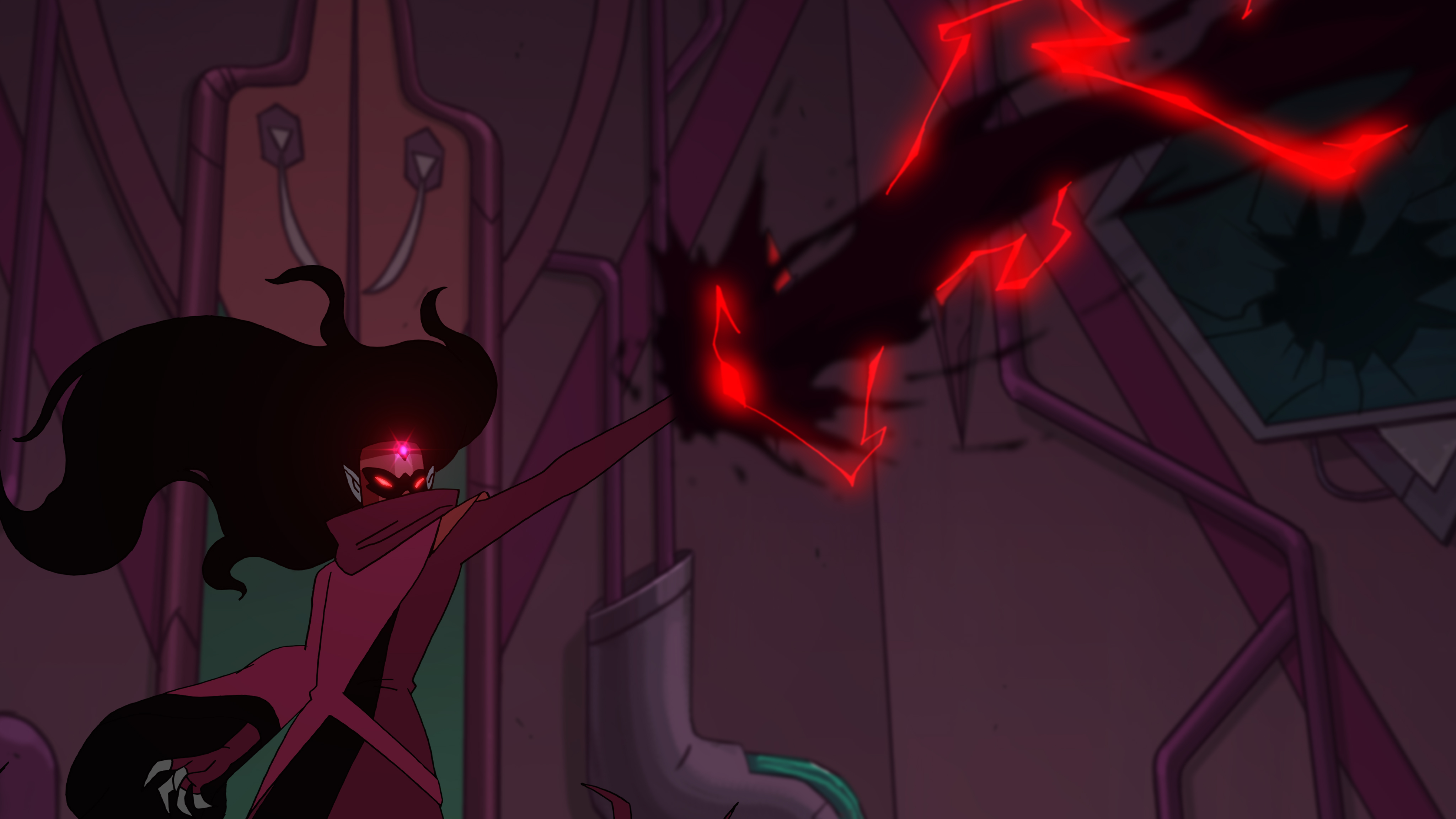
Stevenson: With Bow, it was the same. When we were getting into [figuring out how] we want to show where these characters are from, [we asked], how can we dodge the expectations of what that would mean? As Glimmer says, Bow’s past is mysterious; he’s never really talked about it. She’s not sure where he goes when he’s not at Bright Moon. So of course, we’re like, “Oh, Bow must have this dark, mysterious past.” And then we see that he has such a normal life with his dads, this really normal family with their really normal jobs.
It’s something where even though his family life is a lot less angsty than some of the other characters, we wanted to show that even just the act of trying to hide who you are from the people who love you is still painful. It still has a huge impact on him and he struggles with it. Even opening himself up and being honest with his parents is something that is kind of a risk for him. Bow’s not sure if they’ll be angry at him or if they’ll accept him. [We wanted] to show that even in this more relatable, less dark and dramatic way, that Bow is going through a search for his own identity as well. Of course, having the catharsis of seeing his dads totally support him and love him for who he is was really important for us as well. They’re really great characters. We really love them. I’m so pleased with how that episode came out.
Puc: I know that you’re an avid Dungeons & Dragons player. You’ve spoken before about how you pull a lot from your DND campaigns when you’re writing. This season, we actually see the characters — not playing DND, but doing tabletop battle strategy, and it very much takes on that energy. Where did the idea come from for that episode and how did it feel to incorporate tabletop into the world of Etheria?
Stevenson: I guess I do draw a lot of inspiration from my DND experiences, but this one was really fun because each character sort of embodies a different type of DND player. Glimmer’s like, “I’m really cool! I’m really badass. I have all these cool spells” and then, you know, not enough spell slots, so she runs out of power at key points. Someone like Adora is like, “No, we have to get this absolutely perfect and I have to know exactly what will happen before we go into it. I have a plan. I can plan this out.” Bow is very kind of a classic, heroic sword-and-sorcery [type] who has a strong concept of everyone in these classic archetypes in this heroic sense.
I think Mermista is kind of like the cool, older sister who doesn’t really know what’s going on in the game and just keeps doubling down on these weird concepts that don’t really fit with the game and everyone just, like, doesn’t know how to stop her. Perfuma is the one who is always trying to use spells in new and creative ways, ways that kind of push the boundaries of reality. Frosta’s just the one who’s drawn a really cool original character and just really wants to talk to everyone about her OC and how cool she is.
I think we’ve all played with at least some of those archetypes in DND, so it was really cool to get to explore the characters through that lens.
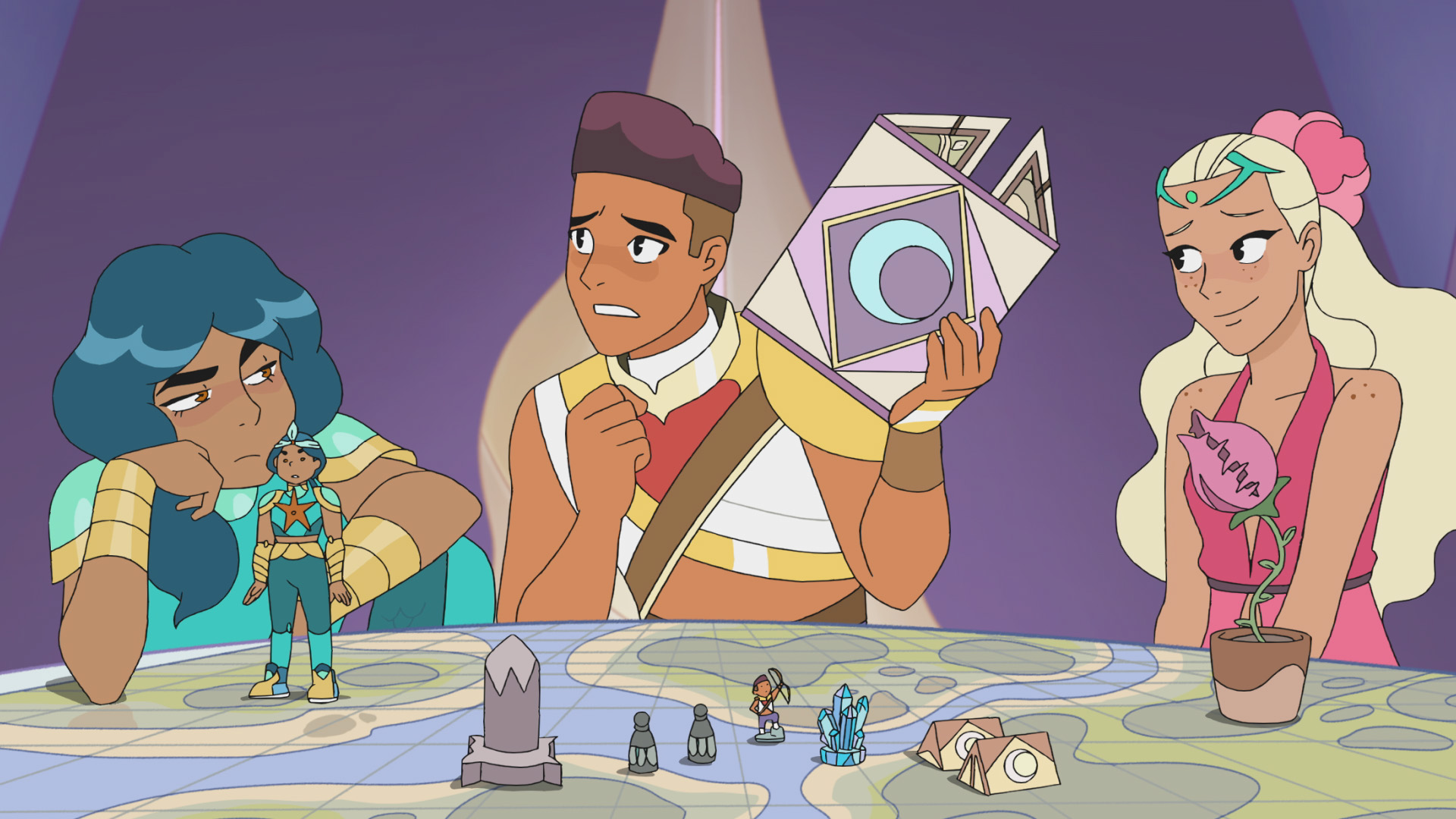
She-Ra and the Princesses of Power season two is now streaming on Netflix. To keep up with announcements about the show, follow @DreamWorksSheRa on Twitter. You can also follow Noelle Stevenson @gingerhazing.


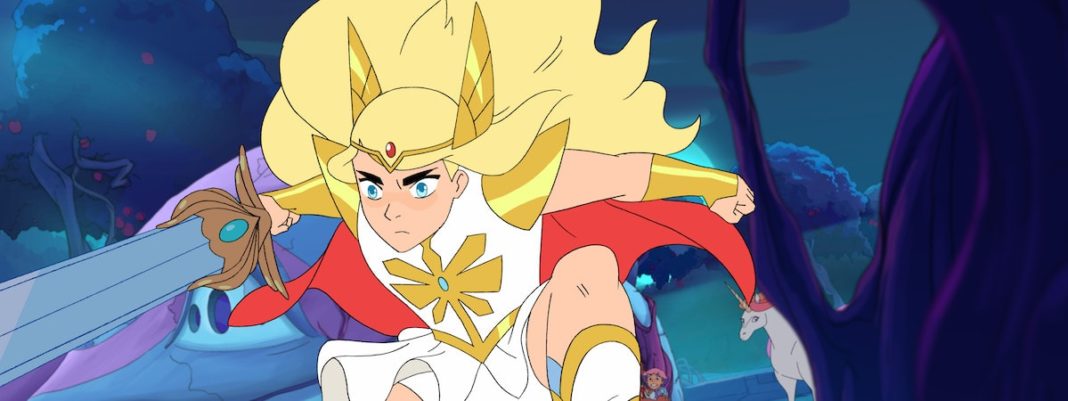


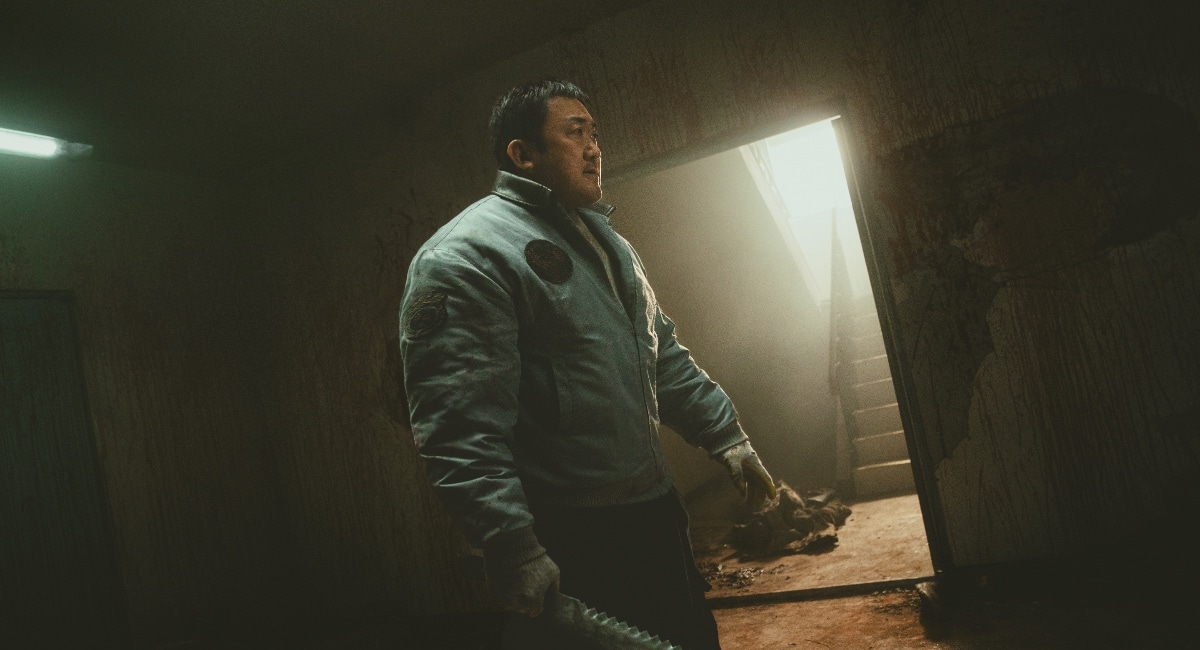



Comments are closed.